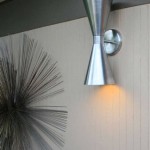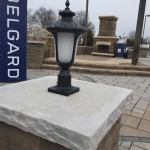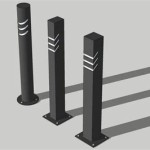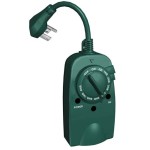How to Install Recessed Lights in Roof Soffit Overhangs Outdoors
Illuminating the exterior of a home with recessed soffit lighting enhances curb appeal and provides safety and security. This comprehensive guide outlines the process of installing recessed lights in roof soffit overhangs, covering crucial considerations and step-by-step instructions.
Planning and Preparation
Proper planning is essential for a successful installation. This includes selecting the right fixture type, determining the optimal placement, and understanding local building codes.
1. Fixture Selection: Choose fixtures specifically rated for outdoor use (wet location rated if exposed to rain or snow). LED lights offer energy efficiency and long life spans, making them a popular choice. Consider color temperature (warm white, cool white, etc.) to achieve the desired ambiance.
2. Placement and Spacing: Carefully plan the location of the lights for even illumination. A general rule of thumb is to space them approximately four to six feet apart, depending on the desired brightness and the fixture's beam angle. Consider the architectural features of the house and the areas you want to highlight.
3. Building Codes: Consult local building codes and obtain necessary permits before beginning the installation. Regulations may dictate wiring methods, fixture requirements, and proximity to insulation.
4. Safety First: Always disconnect power to the circuit at the breaker panel before commencing any electrical work. Use appropriate personal protective equipment (PPE), including safety glasses and gloves.
Wiring and Electrical Connections
Wiring the lights correctly is crucial for safety and proper operation. This section details the electrical connections and safety precautions.
1. Wiring Route: Plan the wiring route from the existing power source to the fixture locations. If running new wiring, use appropriate outdoor-rated cable and secure it to joists or rafters with staples or clips.
2. Junction Boxes: Install weatherproof junction boxes where necessary to connect wires. Ensure all connections are secure and properly insulated with wire nuts.
3. Grounding: Properly ground all fixtures and junction boxes to prevent electrical shock. Follow local codes for grounding requirements.
Installing the Recessed Lights
With the wiring complete, the next step is to install the recessed lighting fixtures. Accurate measurements and careful handling are essential for a clean and professional finish.
1. Cutting the Holes: Use a hole saw attachment for a drill to create the openings in the soffit material. The hole saw size should match the fixture’s specifications. Ensure accurate placement and avoid cutting any existing wiring or plumbing.
2. Fixture Installation: Carefully insert the fixture into the cut hole, following the manufacturer's instructions. Secure the fixture to the soffit using the provided clips or screws.
3. Connecting the Wires: Connect the fixture wires to the wiring in the junction box, ensuring proper polarity (black to black, white to white, and ground to ground). Secure the connections with wire nuts and tuck them neatly into the junction box.
4. Testing the Lights: Once all fixtures are installed and wired, restore power to the circuit and test the lights. Verify that all lights are functioning correctly.
Finishing Touches and Maintenance
The final stage involves ensuring the installation is weathertight and aesthetically pleasing. Regular maintenance ensures the lights continue to operate reliably.
1. Sealing: Seal any gaps around the fixtures with caulk or weatherstripping to prevent water intrusion and insect infestation. This also improves energy efficiency by reducing air leakage.
2. Cleanup: Remove any debris and clean the area around the lights. Touch up any paint as needed to restore the soffit’s appearance.
3. Regular Maintenance: Periodically inspect the lights for damage or wear. Clean the fixtures and replace any burned-out bulbs promptly to maintain optimal performance and appearance.
Troubleshooting
Addressing common issues can save time and frustration during the installation process.
1. Light Doesn't Work: Check the breaker, wiring connections, and bulb. Ensure the power is switched on.
2. Flickering Light: This may indicate a loose connection or a faulty bulb. Check the wiring and replace the bulb if necessary.
3. Overheating Fixture: Ensure the fixture is properly ventilated and that the bulb wattage does not exceed the fixture's rating. Overheating can be a fire hazard.
4. Water Intrusion: Check for gaps around the fixture and apply additional sealant if necessary. Ensure the soffit is properly sloped to allow for water runoff.

Soffit Lighting Installing Outdoor Recessed Lights

8 Soffit Lighting Ideas For Exterior Perfection Dekor

Exterior Recessed Soffit Lighting Aspectled

Soffit Lighting Installing Outdoor Recessed Lights

8 Soffit Lighting Ideas For Exterior Perfection Dekor

Soffit Lighting Jellyfish

8 Soffit Lighting Ideas For Exterior Perfection Dekor

Why Up Lighting Is A Better Alternative To Recessed Soffit

Soffit Lighting Jellyfish

Install Soffit Lighting Lumary Smart Recessed
Related Posts







